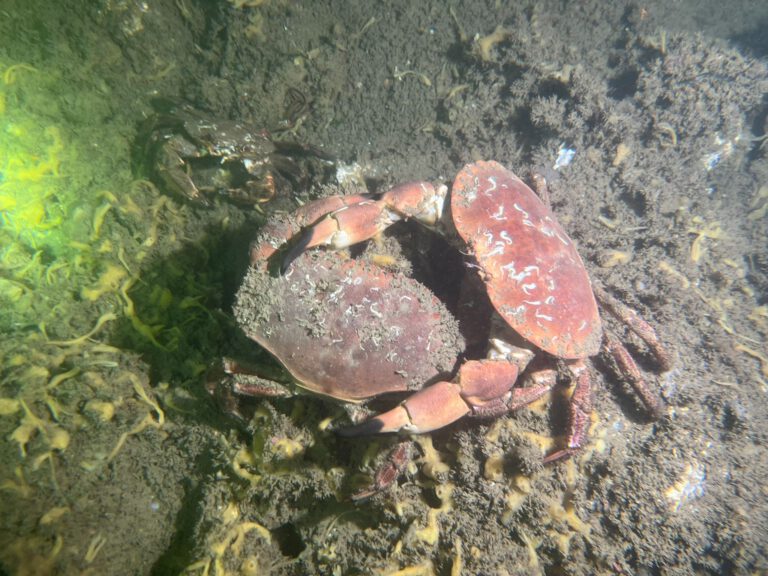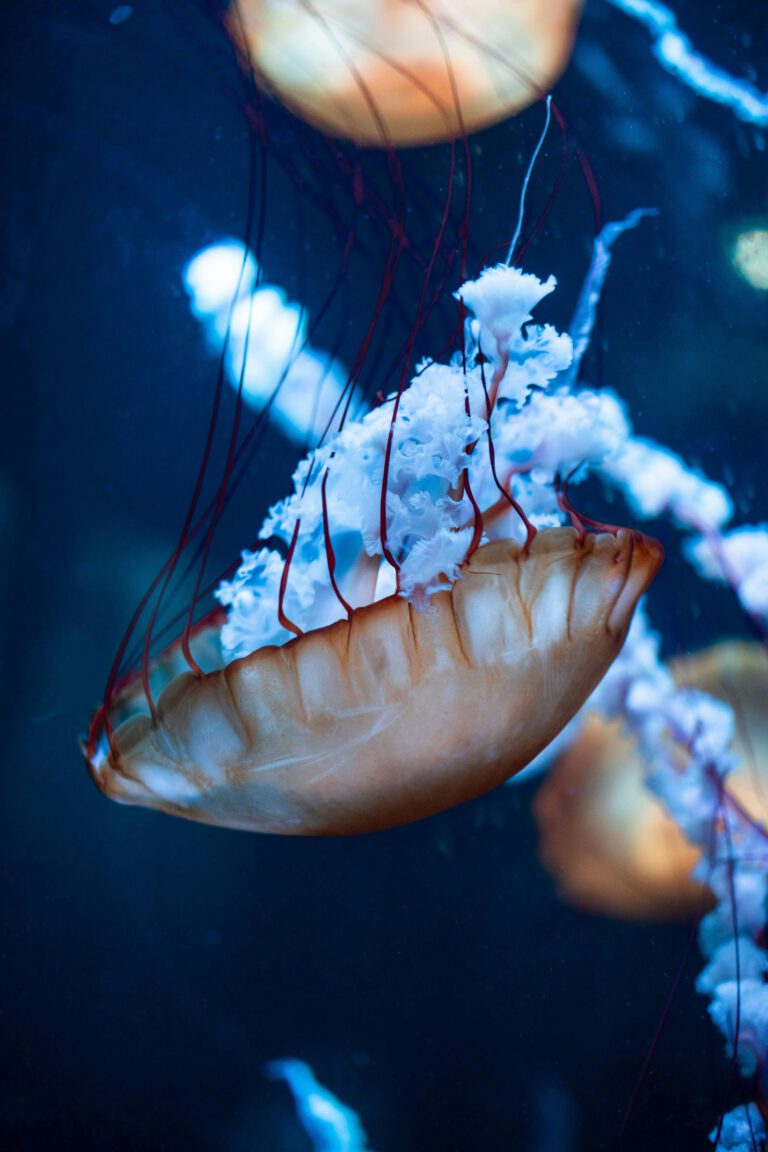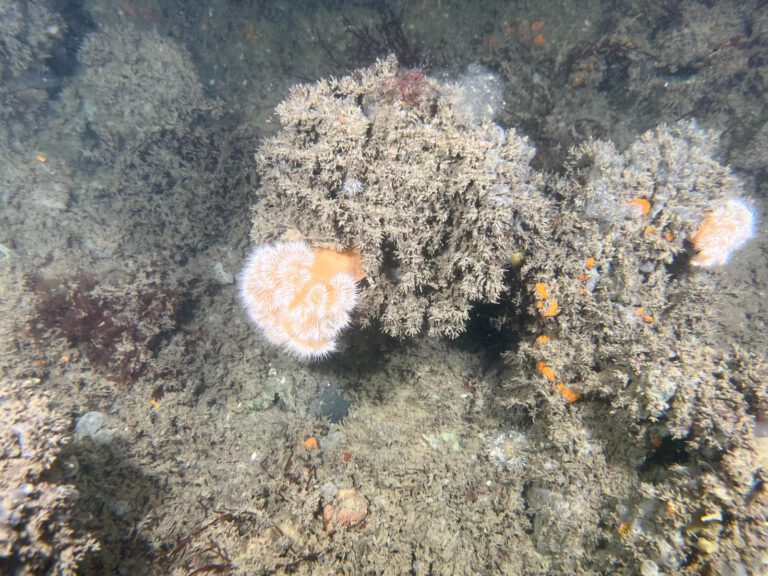Barrel Jellyfish (Rhizostoma pulmo)

Barrel Jellyfish (Rhizostoma pulmo)
Taxonomy: The Barrel Jellyfish belongs to the Rhizostoma genus. It is a large species of jellyfish found in various ocean habitats.
Species: This species can grow up to 90 cm in diameter. Making it one of the largest jellyfish in European waters.
Reproduction: Barrel Jellyfish reproduce by releasing eggs and sperm into the water. Fertilized eggs develop into larvae and settle on the sea floor. Eventually growing into medusas.
Habitat: Commonly found in the Atlantic and Mediterranean seas. They prefer warmer waters and can be seen near the coast during summer.
Diet: Barrel Jellyfish are carnivorous and primarily feed on small fish, plankton and other tiny marine organisms. They use their tentacles to catch prey, which is then brought to their mouth.
Conservation: While not currently threatened. Their populations can be affected by climate change and ocean pollution. They serve as indicators of ocean health.
Unique Anatomy: The Barrel Jellyfish has a bell-shaped body with long. Trailing tentacles. Its transparent, gelatinous structure allows it to float gracefully in the water.
Coloration: They can vary in color from pale blue to pink, which helps them blend into their surroundings. This camouflage aids in avoiding predators.
Lifespan: Barrel Jellyfish typically live for about 1 to 2 years in the wild.
Barrel Jellyfish: Majestic Giants of the Sea
When we think of jellyfish. Images of delicate, floating creatures often come to mind. However, the Barrel Jellyfish is a giant among its kind, captivating divers and marine enthusiasts alike. These majestic animals are not only visually stunning but also play an essential role in the ocean’s ecosystem.
What is a Barrel Jellyfish?
The Barrel Jellyfish, scientifically known as Rhizostoma pulmo, is renowned for its impressive size and unique appearance. With a bell-shaped body that can reach nearly a meter in diameter, it’s one of the largest jellyfish found in European waters. Its long, trailing tentacles create a beautiful display as it moves through the water.
One fascinating feature of the Barrel Jellyfish is its translucent body. This adaptation allows it to blend seamlessly into its environment, helping it evade potential predators while hunting for food.
A Day in the Life of a Barrel Jellyfish
Barrel Jellyfish are not strong swimmers. They drift with the currents, using their bell to pulse through the water. Despite their gentle nature, they are effective predators. They feed on small fish and plankton, using their stinging tentacles to immobilize their prey. Once caught, the food is transported to their mouth for digestion.
Reproductive Cycle: The Circle of Life
The reproductive process of the Barrel Jellyfish is both fascinating and complex. In the summer months, they release eggs and sperm into the water. After fertilization, the resulting larvae settle on the ocean floor, where they develop into young jellyfish. This life cycle highlights the importance of healthy marine environments for their survival.
Ecological Importance: Indicators of Ocean Health
Barrel Jellyfish play a vital role in their ecosystem. By controlling plankton populations, they help maintain the balance of marine life. Their presence can indicate changes in ocean health, making them important for environmental monitoring.
Conclusion
The Barrel Jellyfish is a remarkable creature that deserves our attention and respect. With its stunning size, unique adaptations, and vital role in the marine ecosystem, it’s a reminder of the beauty and complexity of our oceans. As we explore the underwater world, let’s take a moment to appreciate these majestic giants and work towards protecting their habitats for future generations.







